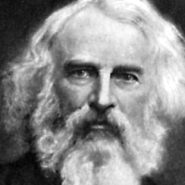By John Keats (1819)
St. Agnes’ Eve — Ah, bitter chill it was!
The owl, for all his feathers, was a-cold;
The hare limp’d trembling through the frozen grass,
And silent was the flock in woolly fold…
Full on this casement shone the wintry moon,
And threw warm gules on Madeline’s fair breast,
As down she knelt for heaven’s grace and boon;
Rose-bloom fell on her hands, together prest,
And on her silver cross soft amethyst,
And on her hair a glory, like a saint:
She seem’d a splendid angel, newly drest,
Save wings, for heaven — Porphyro grew faint:
She knelt, so pure a thing, so free from mortal taint.
Sudden a thought came like a full-blown rose,
Flushing his brow, and in his pained heart
Made purple riot — then doth he propose
A stratagem, that makes the blood run smart…
Analysis
Keats sets romance inside ritual, letting the chill of the season sharpen desire’s heat. Spenserian stanzas unspool a tapestry of color and hush — gules and amethyst, wool and frost — while the lovers improvise within the pageant’s rules. The poem lingers in thresholds: prayer to passion, dream to waking, oath to risk.
Debate has long circled the lovers’ night, but the artistry is unambiguous. Keats orchestrates a theater of sensation where danger and devotion cannot be disentangled. The result is less a moral than a mood — a suspended hour where beauty and peril conspire to make memory.
